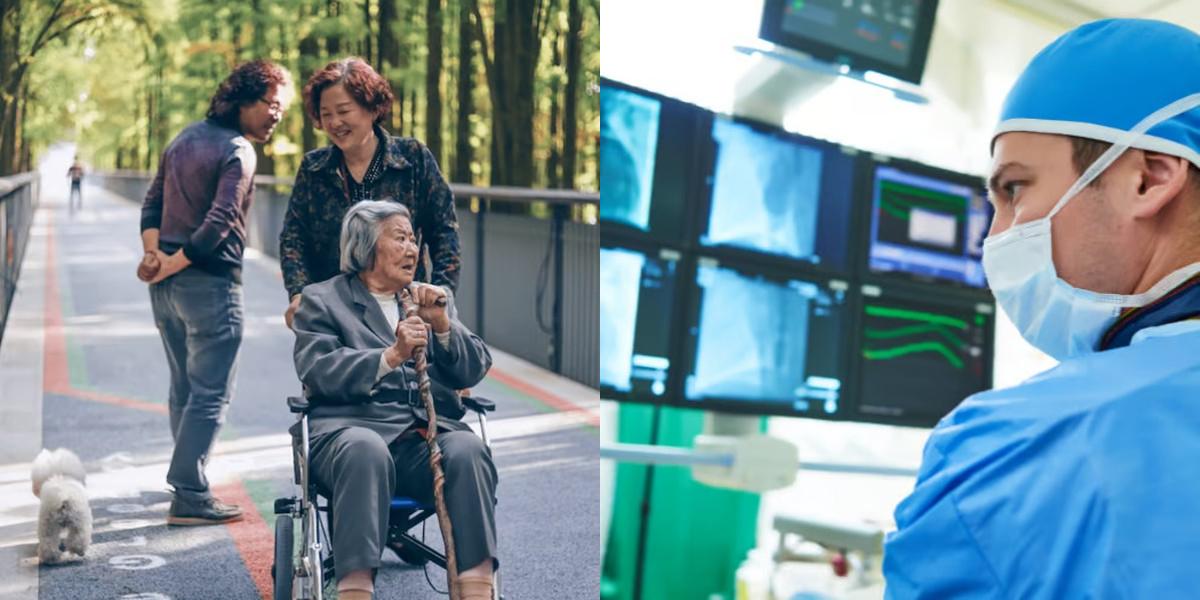Home Health Aide vs Radiology Technician
SearchRadiology Technician
classes near 43215

Key Points:
- Home Health Aides provide basic care and support to patients at home, while Radiology Technicians operate medical imaging equipment and assist doctors in diagnosing and treating patients.
- Home Health Aides typically earn less than Radiology Technicians.
- The demand for both Home Health Aides and Radiology Technicians is expected to grow.
- Home Health Aides often require a shorter training program, typically around 75 hours, while Radiology Technicians need to complete a 2-year associate's degree program.
- Home Health Aide training is generally less expensive and takes less time to complete compared to the 2-year Radiology Technician program.
In today's ever-evolving job market, it can be overwhelming to decide on a career path. With so many options available, it's important to carefully consider your interests, skills, and goals before making a decision. Two popular vocational training options are becoming a home health aide or a radiology technician. While both careers offer unique opportunities, they also have distinct differences. In this blog post, we will explore the roles and responsibilities of a home health aide and a radiology technician, as well as the education and training required for each profession. Additionally, we will delve into the career outlook and salary prospects for these two fields. By the end of this article, you will have a better understanding of the differences between a home health aide and a radiology technician, allowing you to make an informed decision about your future career.
What is a Home Health Aide and Radiology Technician?
Home Health Aide:
A home health aide is a trained professional who provides assistance and support to individuals who require medical care in their own homes. These individuals may be elderly, disabled, or recovering from an illness or surgery. Home health aides are responsible for helping their clients with daily activities such as bathing, dressing, and eating. They may also administer medication, check vital signs, and assist with physical therapy exercises.
Radiology Technician:
A radiology technician, also known as a radiologic technologist, is a healthcare professional who specializes in capturing images of the inside of the human body using medical imaging equipment. These images are vital for diagnosing and treating various medical conditions. Radiology technicians work closely with patients to ensure their comfort and safety during imaging procedures. They are responsible for positioning patients correctly, operating the imaging equipment, and capturing high-quality images for physicians to review.
Difference between a Home Health Aide and Radiology Technician
While both home health aides and radiology technicians play important roles in the healthcare industry, there are several key differences between these two professions:
-
Job Setting: Home health aides primarily work in the homes of their clients, providing one-on-one care. In contrast, radiology technicians typically work in hospitals, clinics, or imaging centers, where they interact with a larger number of patients and collaborate with a team of healthcare professionals.
-
Scope of Practice: Home health aides focus on providing direct care to their clients, helping with activities of daily living and basic medical tasks. On the other hand, radiology technicians primarily focus on capturing images using medical imaging equipment. They do not provide direct care or administer medication to patients.
-
Patient Interaction: Home health aides have the opportunity to develop strong relationships with their clients, as they often work with the same individuals over an extended period of time. Radiology technicians, on the other hand, have less direct interaction with patients. Their main focus is on performing imaging procedures efficiently and accurately.
-
Specialization: Home health aides do not have specialized areas of practice. They provide care to individuals with a variety of medical conditions and needs. Radiology technicians, on the other hand, may choose to specialize in a specific area of medical imaging, such as magnetic resonance imaging (MRI), computed tomography (CT), or mammography.
Home Health Aide vs Radiology Technician: Job Description
Home Health Aide:
- Provide personal care services to clients in their homes, including assistance with bathing, dressing, and grooming.
- Administer medication as prescribed by healthcare professionals.
- Monitor and record clients' vital signs, such as blood pressure and heart rate.
- Assist with physical therapy exercises and mobility assistance.
- Provide emotional support and companionship to clients.
Radiology Technician:
- Prepare patients for imaging procedures by explaining the process and ensuring their comfort and safety.
- Position patients correctly to obtain high-quality images.
- Operate medical imaging equipment, such as X-ray machines or MRI scanners.
- Collaborate with physicians to determine the appropriate imaging techniques for each patient.
- Evaluate images for quality and ensure they accurately capture the desired anatomical structures.
Home Health Aide vs Radiology Technician: Education and Training
Home Health Aide:
- Home health aides typically need a high school diploma or equivalent.
- Some states require formal training and certification programs for home health aides.
- Training programs may include coursework in basic medical care, infection control, and communication skills.
- On-the-job training is often provided by the employer to familiarize home health aides with specific care plans and procedures.
Radiology Technician:
- Radiology technicians typically need an associate's degree in radiologic technology.
- Some states require radiology technicians to be licensed or certified.
- Radiologic technology programs include coursework in anatomy, patient care, radiation physics, and medical imaging techniques.
- Students also gain hands-on experience through clinical rotations in hospitals or imaging centers.
Get courses selected just for you
Try our powerful search engine
Home Health Aide vs Radiology Technician: Career Outlook and Salary
Home Health Aide:
- The demand for home health aides is expected to grow rapidly in the coming years, driven by an aging population and the desire for individuals to receive care in their own homes.
- According to the Bureau of Labor Statistics, the median annual wage for home health aides was $27,080 in May 2020.
Radiology Technician:
- The demand for radiology technicians is also projected to increase, as medical imaging plays a crucial role in diagnosing and treating various medical conditions.
- The Bureau of Labor Statistics reports that the median annual wage for radiologic technologists was $63,710 in May 2020.
Final Thoughts
Choosing a career path is a significant decision that should be based on careful consideration of your interests, skills, and goals. Both home health aide and radiology technician offer fulfilling opportunities to make a positive impact on the lives of others. While home health aides provide direct care and support to individuals in their homes, radiology technicians play a crucial role in diagnosing and treating medical conditions through medical imaging. Consider your preferences for job setting, scope of practice, patient interaction, and specialization when making your decision. Additionally, take into account the education and training required for each profession, as well as the career outlook and salary prospects. By weighing these factors, you can make an informed decision about which career path is the best fit for you.
Explore Dreambound's program accessibility across different locations. Immerse yourself in these blogs for a detailed exploration of the two vocations, unraveling specific requirements and gaining insightful perspectives on how to embark on your journey:

Alyssa Jane is part of the customer success team at Dreambound. She works with students, training providers, and employers, helping them have a smooth customer journey. She is also an ESL tutor and Licensed Psychometrician. She is fond of traveling, photography, and discovering new restaurants.
